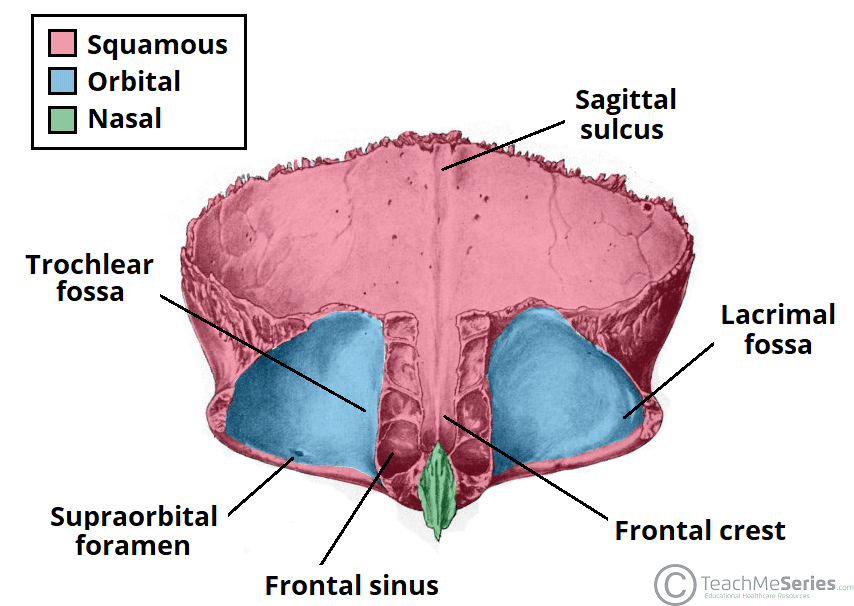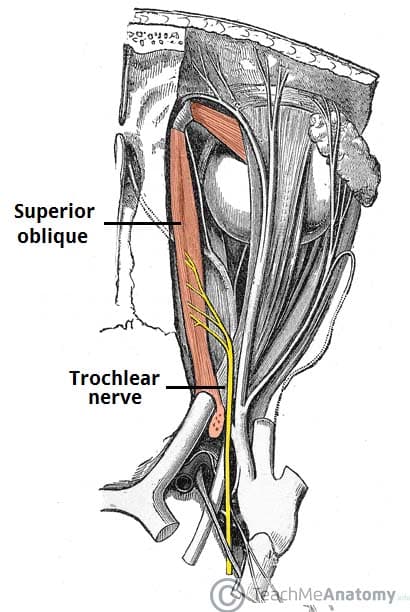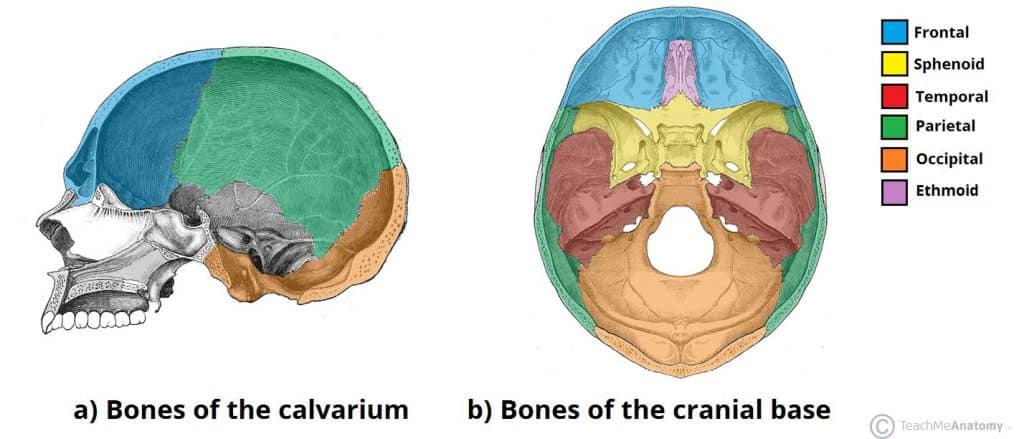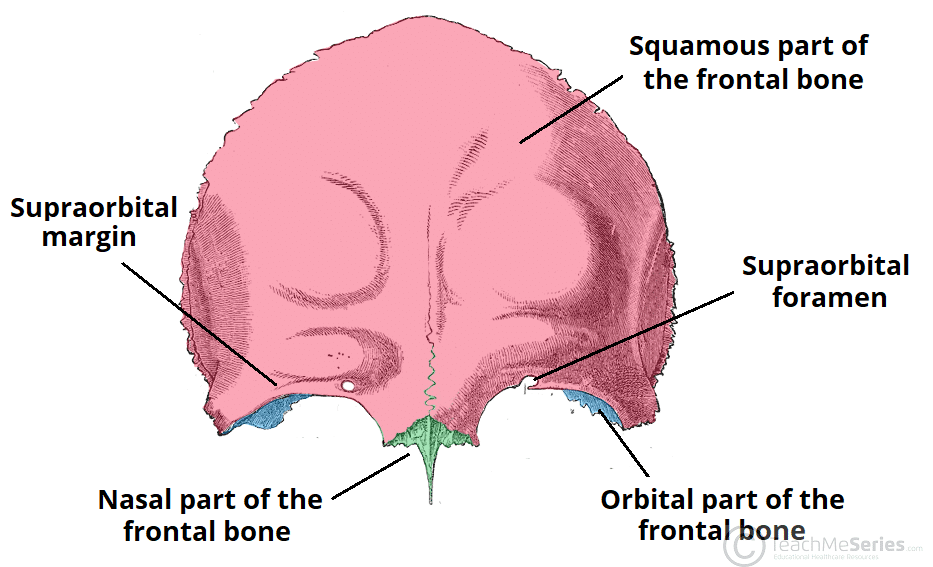The frontal bone is one of the eight bones that make up the cranium – the superior aspect of the skull that encloses and protects the brain.
Its name is derived from the Latin ‘frons’, meaning ‘forehead’.
In this article, we shall look at the anatomy of the frontal bone – it’s location, structure, and clinical significance.
Anatomical Structure
The frontal bone is an unpaired, ‘shell-shaped’ bone that forms the anterosuperior aspect of the cranium.
It consists of the four parts: squamous, orbital (x2), and nasal.
Squamous Part
The squamous part is the largest component of the frontal bone, with its external convex surface forming the shape of the forehead.
The features of its internal surface include:
- Sagittal sulcus – vertical groove in the midline of the frontal bone. It contains the superior sagittal sinus.
- Frontal crest – extension of the sagittal sulcus edges (forms an attachment for the falx cerebri).
- Groove for the anterior meningeal artery.
The squamous part also houses the frontal sinuses. These are separated by a septum and are composed of an anterior and posterior plate. They sit above the orbits either side of the midline of the face.
It is separated from the orbital part by the supraorbital margin. This area contains the supraorbital foramen, where the supraorbital vessels and nerve pass through.

Fig 3 – Inferior view of the frontal bone, demonstrating its internal features.
Orbital Part
The two orbital parts of the frontal bone are comprised of a triangular-shaped flat plate that extends posteriorly from the supraorbital margin – forming the roof of the orbit.
When viewed from below, the anterolateral portion consists of the lacrimal fossa (where the lacrimal gland sits), whilst the anteromedial portion contains the trochlear fossa – an area of attachment for the pulley of the superior oblique muscle.
Nasal Part
The nasal part of the frontal bone is a small area that projects inferiorly between the supraorbital margins. It serves as an area of articulation for the nasal bones and frontal processes of the maxilla.
The nasal spine protrudes from the central portion to support the bridge of the nose.
Attachments
Whilst there is no specific muscular attachment to the frontal bone, the trochlear fossa contains the attachment of a cartilaginous pulley for the superior oblique muscle (named the ‘trochlea’ of the superior oblique muscle).
The falx cerebri also forms part of its attachments with the frontal crest of the internal surface of the frontal bone.

Fig 3 – The action of the superior oblique muscle is augmented by a cartilaginous pulley which attaches to the frontal bone.
Articulations
The frontal bone articulates with twelve other bones of the skull:
- Unpaired: ethmoid, sphenoid
- Paired: nasal, maxilla, lacrimal, parietal, zygomatic
Clinical Relevance – Frontal Sinusitis
Frontal sinusitis refers to inflammation of the frontal sinus, usually caused by an infection.
It is a relatively common condition. However, if untreated, the infection can spread to surrounding structures in the orbit or cranial cavity.
This can lead to: orbital cellulitis, epidural and subdural abscesses, or meningitis.
Clinical Relevance: Frontal Sinus Fracture
Fractures of the frontal sinus most typically occur from motor vehicle accidents or falls.
The characteristic clinical sign is frontal depression in the anterior table of the skull.
Posterior table disruption may be identified by clear fluid leakage from nose – indicating cerebrospinal fluid leak due to rupture of the dura mater.

